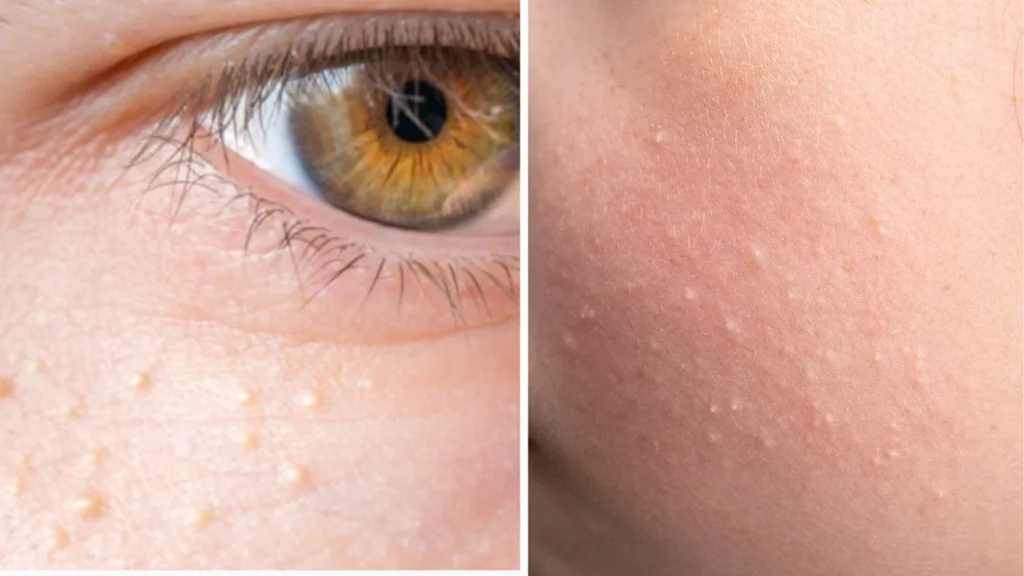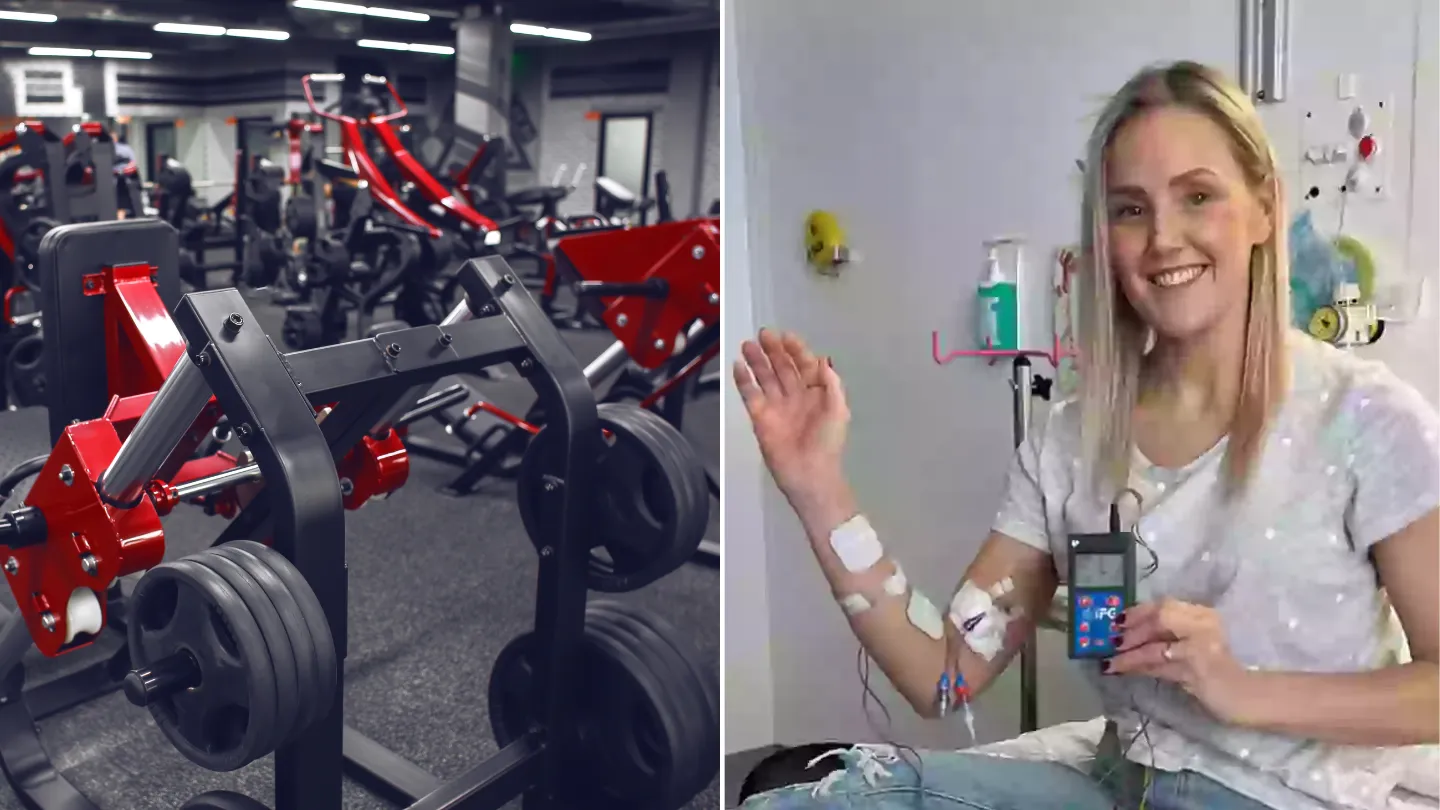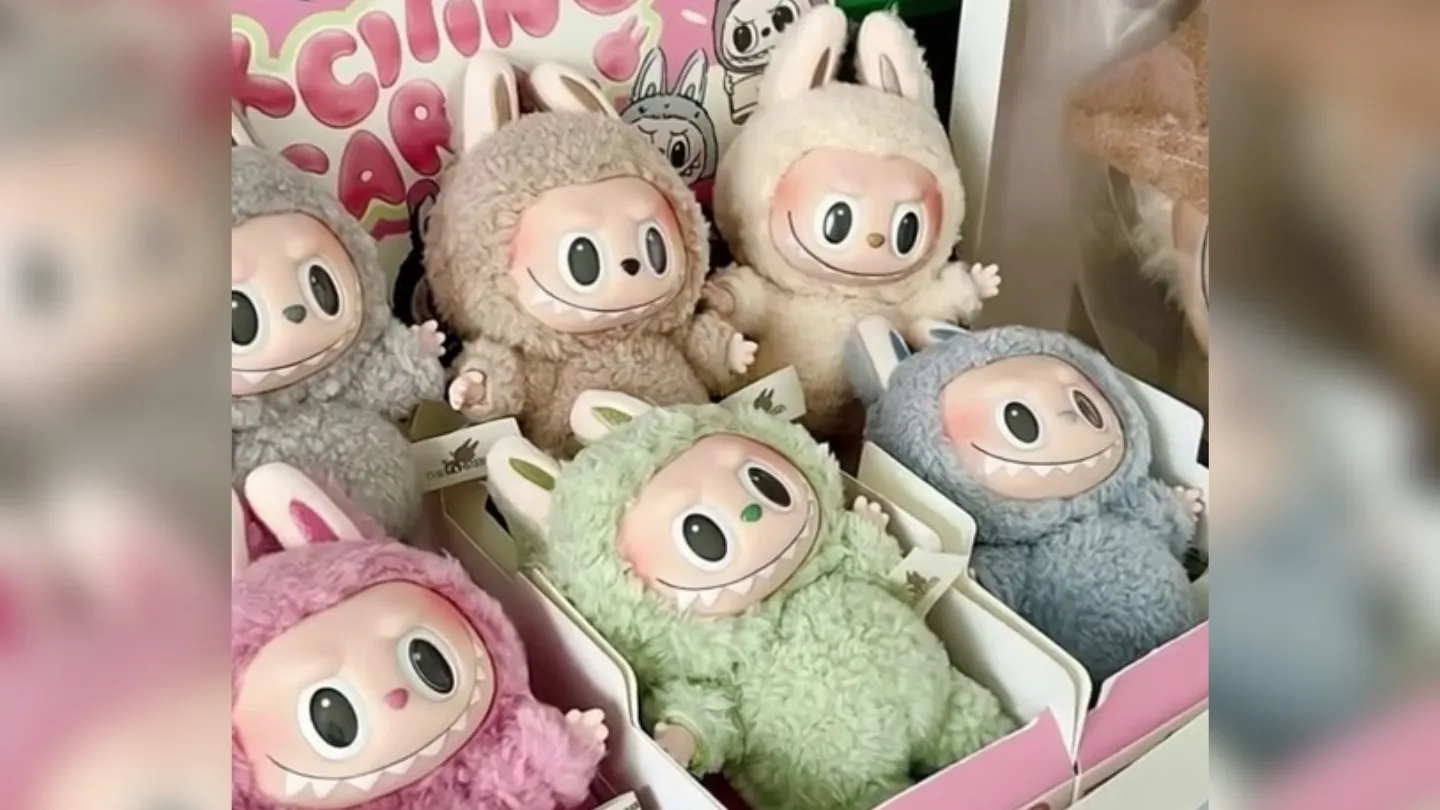Inflammation typically causes skin diseases like psoriasis and eczema, leaving many of us with a variety of lumps and discolorations over time. However, not every bump on your skin is a cause for concern or requires quick attention. Milia, for example, may be more frequent than you realize.
You may have noticed these tiny white bumps on your face, especially on the nose, chin, and cheeks. You might be tempted to pop them like pimples, but you should know what they are and why better leave them alone.
What exactly is milia?
Milia, also known as milium cysts, are small, firm white bumps found on the skin’s surface. Trapped keratin, a protein present in skin, hair, and nails, causes these bumps.
While milia are most frequent in infants up to 50% of newborns get them as part of their skin’s learning process of exfoliation adults can also develop this harmless skin disease if the ducts beneath the skin become clogged due to injuries, burns, or certain skincare products.
Interestingly, many people may have had milia as babies without realizing it, as the disorder is most frequent at that age. These small bumps can appear at any age and on any body part, especially the face.
Different Types of Milia
Although milia may appear identical, it can take on various unique forms depending on the individual and the underlying cause. Knowing these variations can assist in deciding whether therapy is necessary or if the illness should heal naturally.
Neonatal Milia
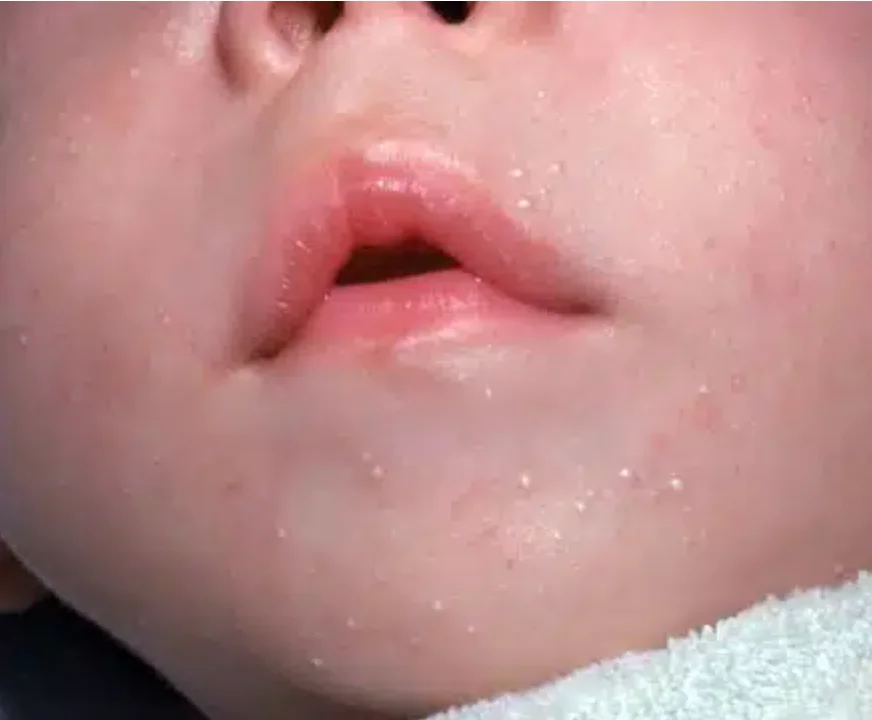
Newborn babies typically find this form on their face, scalp, or upper torso. According to Seattle Children’s Hospital, approximately 40% of children get milia within a few weeks after birth; however, the good news is that it usually heals on its own within a few weeks.
Juvenile Milia
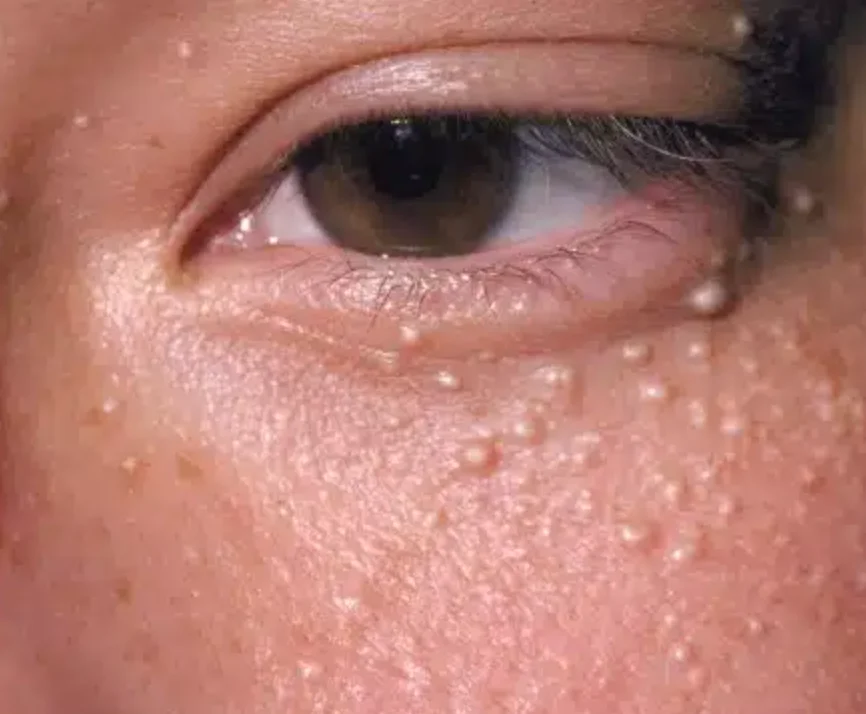
Juvenile milia are less common, but more problematic because they are frequently associated with rare genetic conditions such as Nevoid Basal Cell Carcinoma Syndrome (NBCCS) and Gardner’s syndrome.
Several bumps can arise early in childhood and may necessitate additional research due to their link with several genetic illnesses.
Milia en Plaque
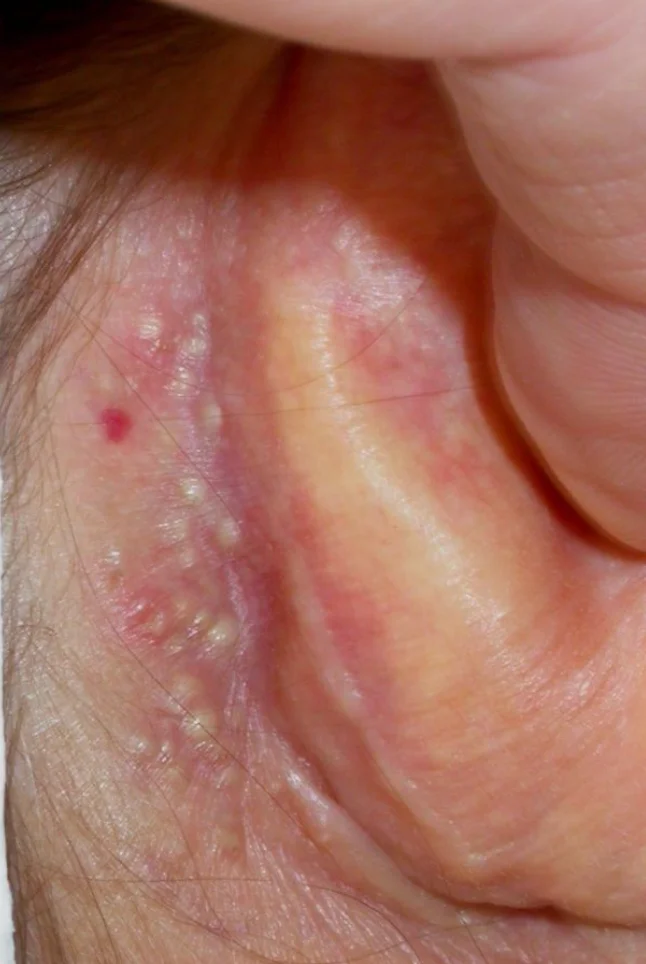
This form is common in middle-aged women, but it can affect persons of any age or gender. It is frequently associated with autoimmune or genetic disorders, such as discoid lupus or lichen planus.
Milia en plaque develops on the eyelids, ears, and jawline, necessitating a more cautious approach to therapy, particularly if underlying problems exist.
Primary Milia
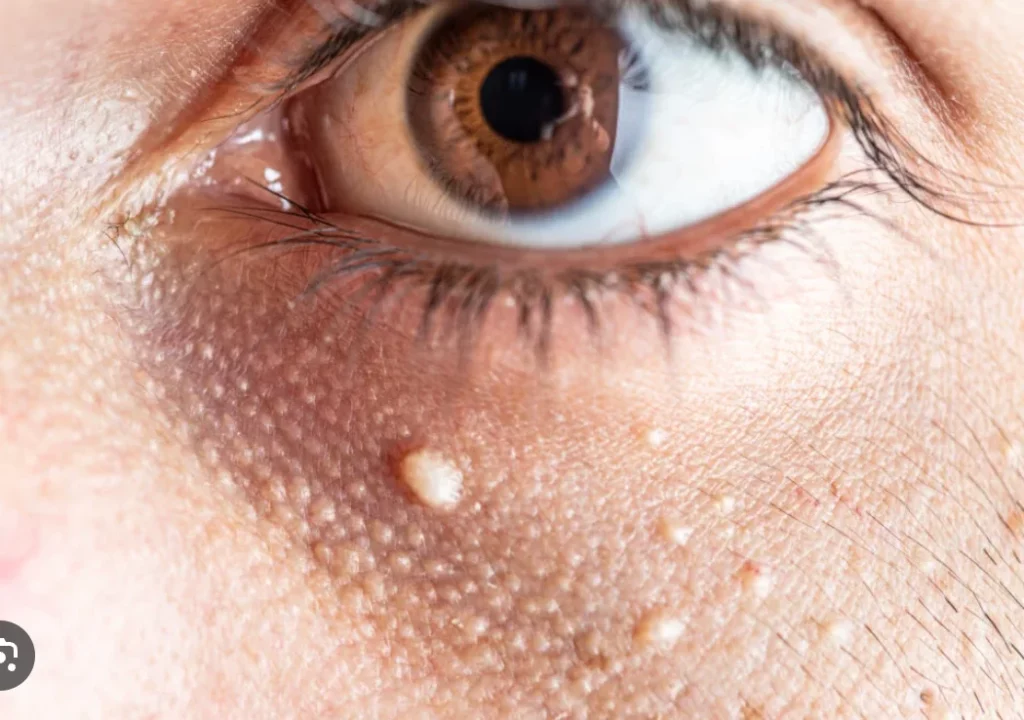
Primary milia, which appears in older children and adults, can be detected on the eyelids, forehead, or genital area. These cysts can linger for several weeks or months before disappearing on their own.
Traumatic Milia
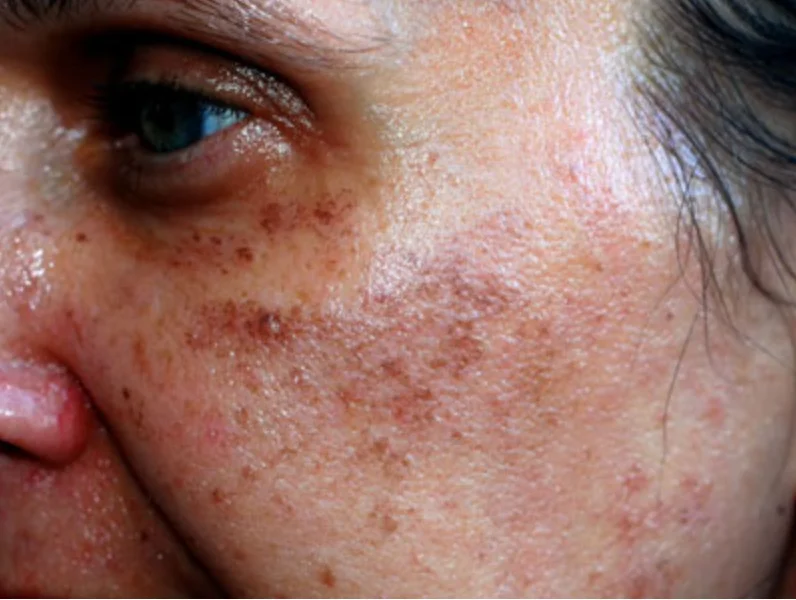
This type of milia occurs in response to skin trauma, such as burns, rashes, or exposure to sunlight.
The cysts can become irritated, often appearing red at the edges with a white center. Traumatic milia can be painful, but they are usually harmless and disappear without medical treatment.
How is Milia diagnosed?
If you’ve spotted little white spots on your skin and suspect milia, see a dermatologist for a proper diagnosis. Fortunately, you can easily identify milia visually, and most cases do not require intrusive testing.
Dermatologists can usually detect milia with a simple skin inspection, and only in rare cases do they need to do a skin biopsy to rule out other disorders.
For those who are unsure whether they have milia or another skin problem, seeking a professional opinion can provide clarity and guide potential next steps in controlling or treating the illness.
Should You Remove Milia?
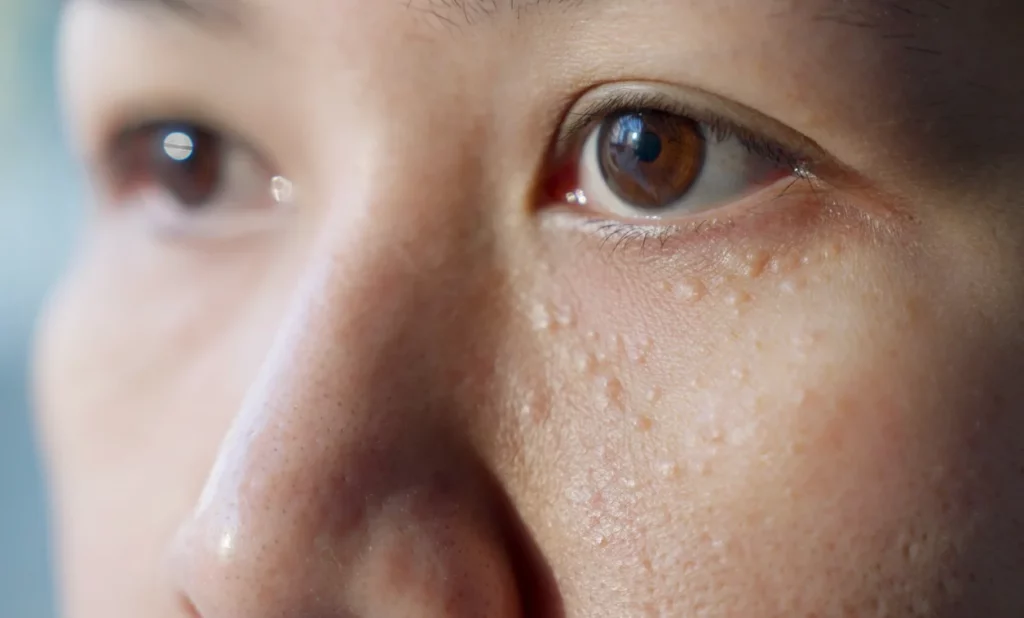
This is when things become interesting. Many people may feel tempted to pluck, pop, or squeeze these little cysts, mistaking them for whiteheads or pimples.
However, unlike acne, milia do not have an opening on the skin’s surface, so they will not react to standard extraction treatments. In fact, attempting to remove them yourself might cause extra irritation and damage.
So, if you see these pimples, leave them alone.
Milia in newborns typically dissolve on their own after a few weeks as the skin matures.
Bumps in older children and adults usually fade away on their own, but some may choose to treat them for cosmetic reasons or if they cause discomfort.
Milia’s treatment options
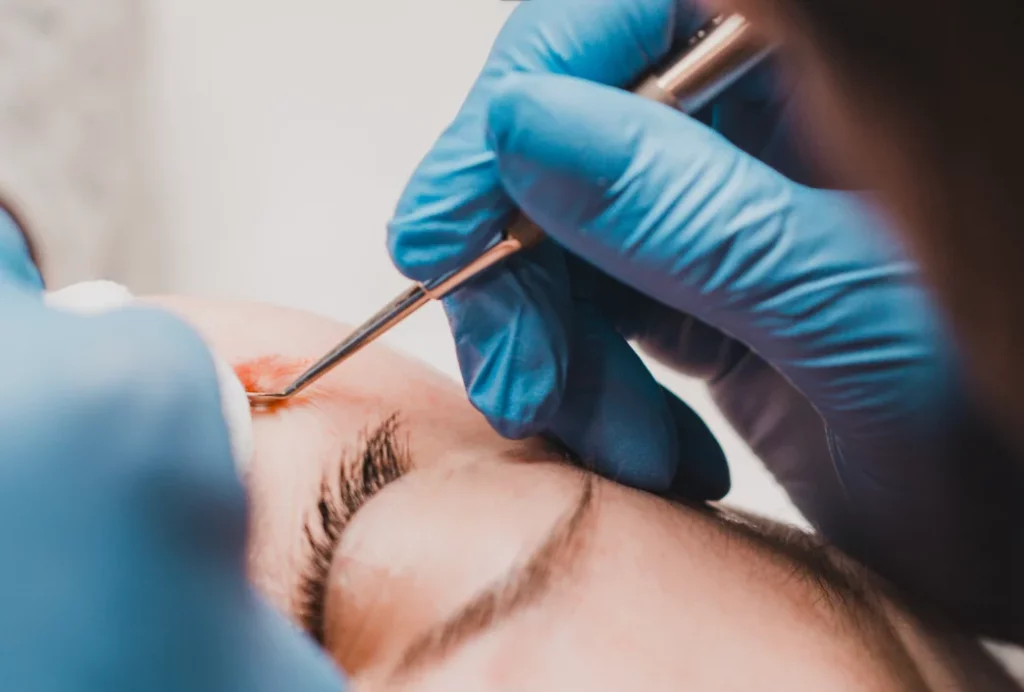
If you don’t want to wait for milia to go away or the bumps bother you, there are many treatments. Dermatologists use a variety of procedures to safely eliminate milia, each tailored to specific conditions and preferences:
Cryotherapy: It uses liquid nitrogen to freeze the milia. This is one of the most popular procedures for removal.
Deroofing: To remove the hump, a sterile needle gently extracts the cyst’s contents.
Topical Retinoids: These lotions include vitamin A and encourage exfoliation, which accelerates the skin’s natural shedding process.
Chemical peels: It involves applying a chemical solution to the skin, which causes the top layer to peel off and promotes the formation of new, smoother skin.
Laser Ablation: To break up milia cysts without damaging the surrounding skin, a tiny laser is used.
Diathermy: For more severe cases, we use extreme heat to destroy the cysts.
Curettage destruction: It is a surgical treatment that involves scraping away the cysts and cauterizing the region.
Some people have tried unusual procedures, like using a paperclip to remove hair. However, we strongly advise leaving such treatments to professionals instead of attempting them at home.
Can You Prevent Milia?
While milia are not hazardous, they can be inconvenient to deal with, especially if they appear frequently. Fortunately, a few lifestyle and skincare adjustments can help lessen the likelihood of acquiring these unpleasant bumps:
Use Sunscreen: Because milia are commonly related to skin damage, wearing sunscreen on a regular basis can help protect your skin from dangerous UV rays and prevent additional damage.
Avoid Using Heavy Skincare Products: Thick creams, ointments, and even some makeup products can clog pores and increase the risk of getting milia. Switching to lighter, non-comedogenic cosmetics might help your skin stay clear.
Exfoliate on a regular basis: While it may be impossible to exfoliate a baby’s skin due to its fragile pores, adults should incorporate exfoliation into their skincare routine. Keeping the skin clean and clear of dead cells can help prevent keratin buildup, lowering the risk of getting milia.
The Final Word: Do Not Panic, Milia Are Harmless.
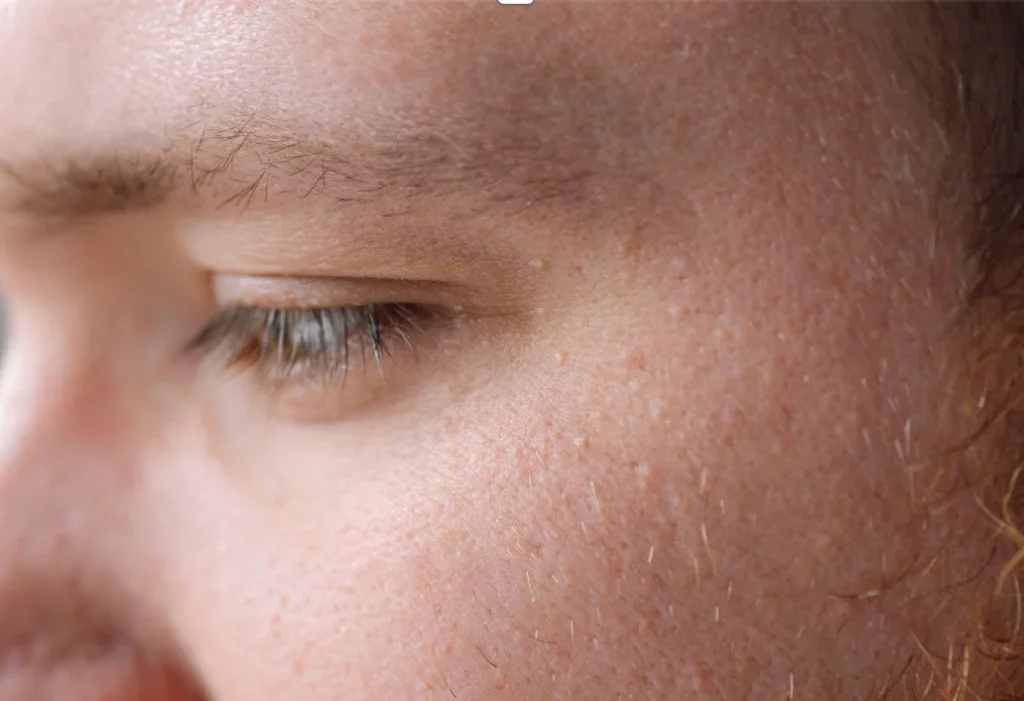
Milia are ultimately a harmless condition. Although unattractive, they pose no health risks and will disappear on their own.
Dermatologists can provide safe and effective treatments for clients who are concerned about their looks. However, it is critical not to take matters into your own hands. Resist the impulse to pop or squeeze these bumps, since doing so may cause more harm than good.
Just leave these tiny white bumps alone. they’ll likely go away naturally. If you want to look into treatment alternatives, a simple consultation with a skin professional will provide you with all the information you need.

